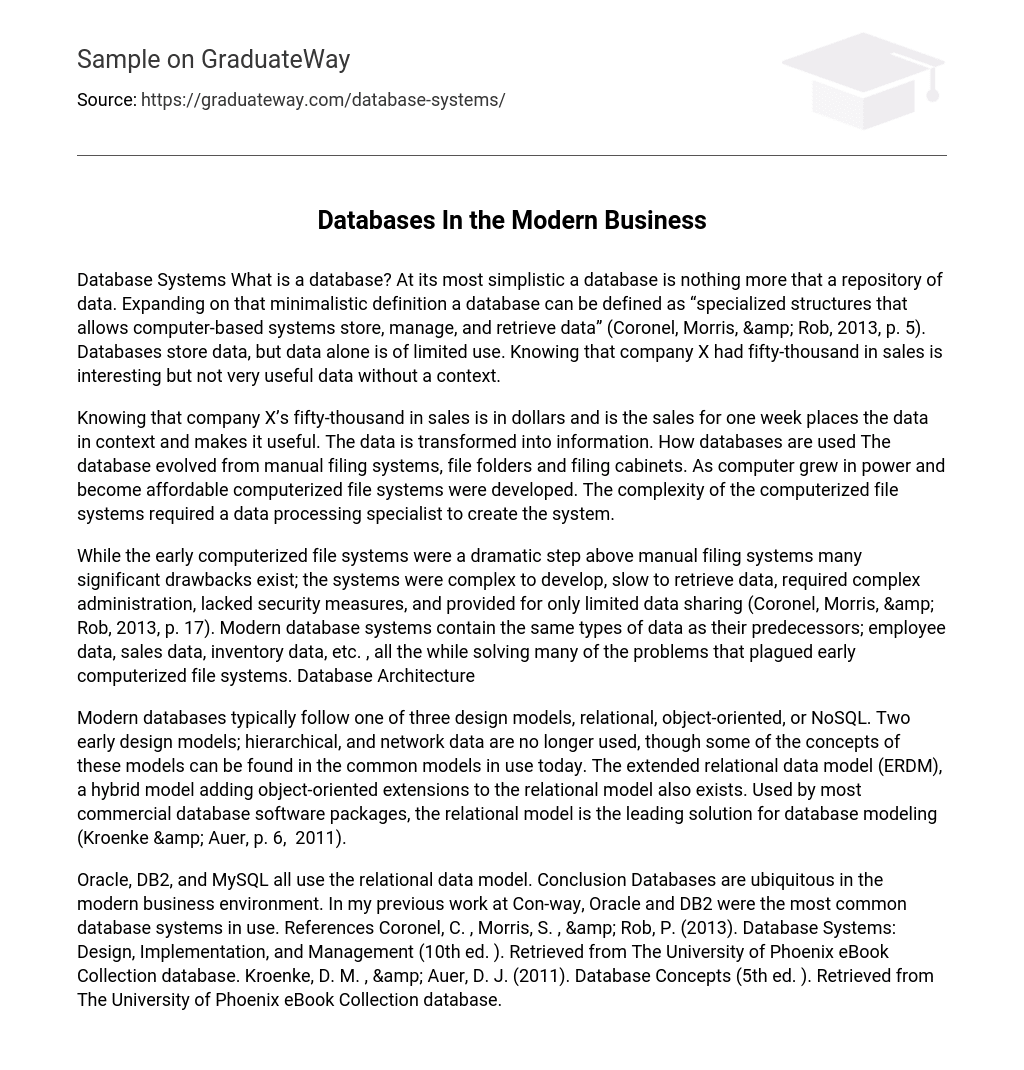Database Systems What is a database? At its most simplistic a database is nothing more that a repository of data. Expanding on that minimalistic definition a database can be defined as “specialized structures that allows computer-based systems store, manage, and retrieve data” (Coronel, Morris, & Rob, 2013, p. 5). Databases store data, but data alone is of limited use. Knowing that company X had fifty-thousand in sales is interesting but not very useful data without a context.
Knowing that company X’s fifty-thousand in sales is in dollars and is the sales for one week places the data in context and makes it useful. The data is transformed into information. How databases are used The database evolved from manual filing systems, file folders and filing cabinets. As computer grew in power and become affordable computerized file systems were developed. The complexity of the computerized file systems required a data processing specialist to create the system.
While the early computerized file systems were a dramatic step above manual filing systems many significant drawbacks exist; the systems were complex to develop, slow to retrieve data, required complex administration, lacked security measures, and provided for only limited data sharing (Coronel, Morris, & Rob, 2013, p. 17). Modern database systems contain the same types of data as their predecessors; employee data, sales data, inventory data, etc. , all the while solving many of the problems that plagued early computerized file systems. Database Architecture
Modern databases typically follow one of three design models, relational, object-oriented, or NoSQL. Two early design models; hierarchical, and network data are no longer used, though some of the concepts of these models can be found in the common models in use today. The extended relational data model (ERDM), a hybrid model adding object-oriented extensions to the relational model also exists. Used by most commercial database software packages, the relational model is the leading solution for database modeling (Kroenke & Auer, p. 6, 2011).
Oracle, DB2, and MySQL all use the relational data model. Conclusion Databases are ubiquitous in the modern business environment. In my previous work at Con-way, Oracle and DB2 were the most common database systems in use. References Coronel, C. , Morris, S. , & Rob, P. (2013). Database Systems: Design, Implementation, and Management (10th ed. ). Retrieved from The University of Phoenix eBook Collection database. Kroenke, D. M. , & Auer, D. J. (2011). Database Concepts (5th ed. ). Retrieved from The University of Phoenix eBook Collection database.





